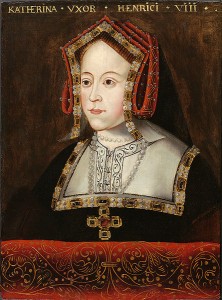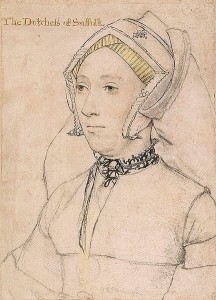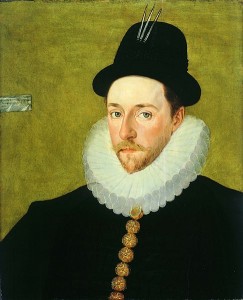
On 29th July I received news that my best friend of thirty-three years had died. I was devastated, particularly as I was actually on my way to spend a few days with her and her family. Su was the best friend a girl could have, and an amazing woman, and I miss her like crazy. My thoughts and prayers are with her husband, sons, family and friends.
On hearing of my loss, author and anthropologist Kyra Cornelius Kramer, who has become a good friend to me over the past few years, sent me this article on the friendship between Maria de Salinas and Catherine/Katherina of Aragon as a tribute to Su and my friendship with her. Su had a soft spot for Catherine of Aragon so it seems a fitting tribute, although, unlike Catherine, Su was surrounded by a family who thought the world of her. Thank you so much to Kyra, this article really moved me. There are many, many times that Su was there for me in my time of need and vice versa.
Over to Kyra…
Maria de Salinas is one of my favorite people of the Tudor era because few people of any time period have ever shown the unswerving and selfless friendship she was capable of. Maria was Katherina of Aragon’s loyal friend until the last moments of the queen’s life. When Katherina lay dying, abandoned by the husband she loved and isolated in a de facto prison, Maria defied Henry VIII and braved his wrath to rush to the queen’s side so that her friend would not pass away uncomforted.
Maria was not among the original Spanish ladies to accompany Katherina to England to marry Arthur Tudor. She came a few months later, after the young Princess of Wales had been widowed, as part of a second wave of Spanish attendants. Isabella of Spain sent them as a sign of her support for the newly made arrangement that Henry VII’s second and only surviving son, Henry, would be wed to Katherina. While her mother lived, Katherina’s future and the future of her ladies in waiting seemed secure. However, the death of Isabella of Spain precipitated eight years of penury and hardship for Katherina and her attendants, as the princess was used as bargaining chip between her hardnosed former father-in-law and her uncaring father. Maria remained loyal to Katherina throughout these tribulations.
Maria’s devotion was rewarded with a place by Katherina’s side at court when the princess finally married Henry VIII in 1509. Katherina loved Maria, and more importantly the new Queen of England trusted her. Katherina’s faith was not misplaced. History is rife with occasions of former friends betraying each other and becoming enemies, but Katherina and Maria remained close, their emotional bonds cemented by mutual loyalty and love.
Maria’s absolute dedication to Katherina’s interests over the interests of Spain quickly became a source of contention between Katherina and her father. Ferdinand of Aragon, in spite of his shameful treatment of his daughter during her widowhood, still expected Katherina to actively promote Spanish interests in her husband’s court. Maria, ever-mindful of Ferdinand’s treachery and callousness, encouraged the queen to support the needs of her English subjects instead. Ferdinand’s ambassador, Luis Caroz de Villaragut, complained bitterly about this to his master in Castile, and tried to have Maria removed. In spite of Villaragut’s grousing and Ferdinand’s disapproval, Maria’s position in Katherina’s court remained secure. They were steadfast friends, and not even matters of diplomacy and state would separate them.
In 1516 Maria married William Willoughby, the 11th Baron of Willoughby de Eresby, but she remained a at court as a lady in waiting to the queen. Katherina and Maria continued to grow closed over time. Both women suffered the loss of their children, and both women had only one daughter survive to adulthood. It is likely that their shared pain and grief further strengthened their already close attachment to one another.
Maria was widowed in 1526 and wound up in a protracted legal dispute with her brother-in-law, Christopher Willoughby. The queen, who had been supplanted in the king’s affections and was contesting an annulment, was unable to come to the aid of her friend. In fact, Katherina’s close ties to Maria might have actually undermined Maria’s hope to gain the king’s help. Nevertheless, Maria did not try to curry Henry’s favor by hiding or ameliorating her support of Katherina’s rightful place as queen. She remained Katherina’s inexorable ally. Maria never put her own needs or chance for material gain ahead of friendship.

Although Maria had the satisfaction of seeing her daughter, Catherine Willoughby, become the wealthy and consequential Duchess of Suffolk in 1533, she also had the sorrow of watching her best friend lose everything. The former queen had been cast off, forbidden from seeing her daughter, cut off from her friends, and was enduring Henry’s rejection of papal authority, his (to her) bigamous marriage to Anne Boleyn, and the birth of his new daughter, Elizabeth. Maria, like the rest of Henry’s subjects, was absolutely forbidden to go to the queen at Kimbolton manor house, where the king had banished her. To ignore such an edict could be considered treasonous, and carry the penalty of death.
When Christmastime of 1535 brought Maria news that her oldest and dearest friend was dying, she desperately petitioned the king to be allowed to go Katherina’s side, yet Henry would not budge. Not even the fact Maria’s daughter was married to Henry’s best friend could sway the stubborn and vengeful monarch. He absolutely forbade Maria to see Katherina. As far as Henry was concerned, his former wife and the mother of his oldest daughter could die alone as suitable punishment for thwarting his will.
Notwithstanding the risk of imprisonment or worse, when Maria received word the first week of 1536 that Katherina was on death’s doorstep, Maria bit her thumb at the king and rode hell-for-leather for Katherina’s gilded cage at Kimbolton. Although Maria was in her mid-to-late 40s, and thus would have been considered an elderly woman in the Tudor era, she rode sixty miles through the dark of night in freezing weather to reach her friend. At some point in her journey she was thrown from her horse, but having a stainless-steel (and thus unbreakable) backbone, Maria was undeterred by her tumble and rode onwards. She arrived at Kimbolton on January 6, cold, muddy, tired, and determined. Maria, as smart as she was dependable, turned her riding accident to her advantage and used the stains on her dress to convince Katherina’s steward and jailer, Sir Edward Bedingfield, that she had “lost” the papers giving her permission from the king to see the former queen. Her ploy worked, and Bedingfield let her inside the house. Once Maria had breached the manor, she went to Katherina’s room, locked the door, and then refused to come out again. There is no record of it, but I will bet you money that Maria also called Bedingfield names in Spanish, and advised him to kiss her hind end. Bedingfield was unwilling to break down the door physically drag out a peeress (and was probably a little afraid she would tear out his heart and eat it in front of him), so could only wring his hands and moan. Maria couldn’t be winkled out of Katherina’s room with a big pin.
Therefore, Maria was there to hold Katherina in her arms as the queen breathed her last on the following day.
Despite the king’s attempts to keep Katherina from any personal comfort, Maria’s courage and physical daring secured the bereft former princess of Spain some solace. It should be noted that Maria actually risked her life to reach her best friend in Katherina’s darkest hour. She could have easily gotten killed on the journey, and there was no guarantee Henry wouldn’t throw her in the Tower and then behead her for treason. The possibilities of death or imprisonment were trivial to Maria when compared to friendship.
Maria got away with her impudent defiance of the king’s commands, probably because of the influence of her son-in-law, Charles Brandon. Moreover, her daughter Catherine Brandon went with her to Katherina of Aragon’s funeral, making sure there were some mourners of suitable rank for a queen’s burial in attendance. Maria herself died in May of 1539, and legend has it that she was interred at Peterborough Cathedral with Katherine, staying by her queen’s side in death as she did in life.

Maria de Salinas also got cosmic revenge against Henry VIII for her friend’s betrayal and death. Maria’s daughter Catherine married a man named Robert Bertie after her first husband’s death, and her son from this relationship, Peregrine Bertie, was an ancestor of Lady Diana Spencer, who is the deceased mother the royal princes William and Harry. William, currently the Duke of Cambridge, will one day inherit the throne of England. Thus, it is Maria’s direct descendants, not Henry’s, who will wear the crown.
It is a fitting legacy for a woman of such high courage and unshakable friendship.
Kyra Cornelius Kramer is the author of Blood Will Tell: A Medical Explanation of the Tyranny of Henry VIII and The Jezebel Effect: Why the sl*t Shaming of Famous Queens Still Matters (Note from Claire – both brilliant books). She is a freelance academic with BS degrees in both biology and anthropology from the University of Kentucky, as well as a MA in medical anthropology from Southern Methodist University. She has written essays on the agency of the Female Gothic heroine and women’s bodies as feminist texts in the works of Jennifer Crusie. She has also co-authored two works; one with Dr. Laura Vivanco on the way in which the bodies of romance heroes and heroines act as the sites of reinforcement of, and resistance to, enculturated sexualities and gender ideologies, and another with Dr. Catrina Banks Whitley on Henry VIII.